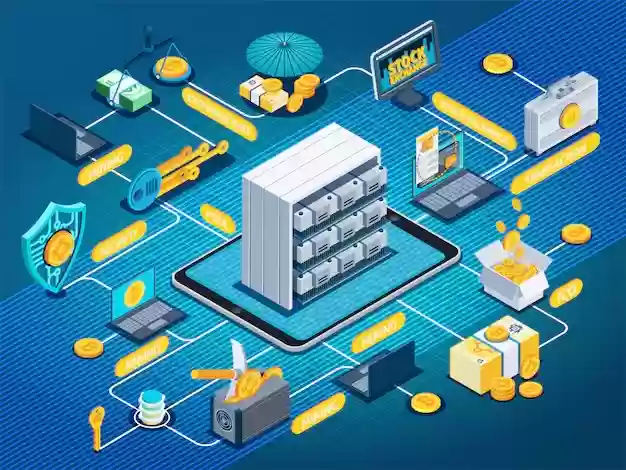Solo Mining vs. Pool Mining: Understand the Differences and Choose the Best Option for You
 11 Mar 25
11 Mar 25
Mining cryptocurrencies like Bitcoin involves a choice: solo mining or pool mining. Solo mining means working independently to solve complex algorithms and earn rewards. It's a high-stakes approach where success relies on significant computing power and a bit of luck. On the other hand, pool mining lets you join forces with other miners, improving your odds of earning smaller, more consistent payouts by sharing resources and splitting rewards.
Understanding these methods is essential, especially if you're new to mining and weighing the pros and cons of going solo versus teaming up. While solo mining offers full control and the chance for higher rewards, it's a riskier path that requires considerable investment. Pool mining provides stability but involves sharing profits. Choosing the right option depends on your goals, budget, and risk tolerance.
Understanding Solo Mining
Solo mining is the process of mining cryptocurrencies independently without joining a mining pool. This method appeals to those seeking full control over their mining operation, but it comes with high stakes and requires a significant commitment. If you’re debating whether solo mining suits your goals, understanding its mechanics, benefits, and challenges is critical.
How Solo Mining Works
In solo mining, an individual miner aims to solve cryptographic puzzles to add a block to the blockchain. Unlike pool mining, where resources and rewards are shared, solo miners take on the entire blockchain network alone. This process uses a Proof-of-Work (PoW) model, requiring miners to leverage high-end computational hardware to hash and validate blocks.
The reward system is straightforward but competitive. If a solo miner successfully solves the puzzle, they claim the entire block reward and associated transaction fees. However, the computational power needed is immense due to the growing mining difficulty of networks like Bitcoin. This often requires advanced ASIC miners, massive energy consumption, and access to reliable cooling systems. For example, ECOS explains how the demand for power intensifies as the network grows, making it increasingly challenging for individuals to find blocks.
Benefits of Solo Mining
Solo mining has its unique advantages that can make it appealing to certain users. Here are some of the key benefits:
- Full Ownership of Rewards: Unlike in pool mining, where rewards are distributed among participants, solo miners retain 100% of the block rewards, including any transaction fees.
- Independence: Solo miners have complete control over their operation from choosing the hardware to deciding mining schedules. As noted by Bitdeer, this autonomy lets miners operate without relying on others, fostering a sense of self-reliance and achievement.
- No Dependency on Third Parties: By avoiding mining pools, solo miners eliminate risks associated with pool failures, fees, or mismanagement. This freedom appeals particularly to users with the technical skills and resources to manage their own setup.
These benefits make solo mining an attractive option for highly experienced miners or those looking to maximize profits when mining conditions are favorable.
Challenges of Solo Mining
While the rewards of solo mining are tempting, the risks and obstacles are equally significant. Here are the primary challenges:
- Low Probability of Success: The odds of solving a block independently on large networks like Bitcoin are slim, especially as the network hash rate grows. According to Cointelegraph, the increasing mining difficulty drastically reduces the chances of success for solo miners.
- High Costs of Equipment and Power: Advanced ASIC devices are expensive, and their power consumption can drive up electricity bills. Additionally, the upfront costs to establish a competitive setup can be a barrier for many.
- Unpredictable Revenues: Unlike in pool mining, where returns are steady, solo miners face erratic payouts. Block rewards are only earned when a block is successfully mined, making profitability uncertain.
- Intense Competition: Mining involves a global network of miners, many of whom run industrial-scale operations. Solo miners often struggle to compete with these large-scale setups that enjoy economies of scale, as highlighted by Mining Store.
Given these hurdles, solo mining is not for everyone. It requires extensive financial resources, technical knowledge, and a tolerance for risk. Without these, the substantial investment might not yield the returns a miner expects.
Wrapping Up This Section
Understanding solo mining’s mechanics, benefits, and challenges provides a clearer picture of what’s at stake. While it offers full independence and higher potential rewards, it also demands significant resources and comes with considerable risks. Only miners with the right setup and mindset are likely to succeed in the highly competitive solo mining arena.
Understanding Pool Mining
Pool mining is a method where individual miners collaborate and combine their computational resources to increase the likelihood of successfully mining cryptocurrency blocks. When mining as an individual known as solo mining the chances of solving a block are low, especially on highly competitive networks like Bitcoin or Ethereum. Pool mining addresses this by pooling efforts, splitting both the work and rewards among participants based on their contributions. Below, we’ll explore how pool mining works, its advantages, and its limitations.
How Pool Mining Works
In a mining pool, participants contribute their computational power to a centralized server (the pool). This pool organizes and coordinates mining efforts, tasking miners with smaller, manageable pieces of the mining algorithm to solve collectively. Once the pool successfully mines a block, the rewards are distributed proportionally based on each miner's contributions.
A pool operator plays a pivotal role, managing the pool's infrastructure, ensuring fairness, and handling reward distribution. Pool operators also charge fees, typically a small percentage of the miners' rewards, as payment for maintaining the service.
Reward distribution models vary across pools, but the two most common methods are:
- Pay Per Share (PPS): Miners are rewarded immediately and consistently for each valid share submitted, regardless of whether the pool successfully mines a block. This guarantees steady payouts but often comes with higher pool fees.
- Pay-Per-Last-N-Shares (PPLNS): Rewards are calculated based on the miner’s submitted shares during a specific period. PPLNS rewards fluctuate and depend on the pool's block-mining success, making them riskier but potentially more lucrative.
For those seeking a deeper understanding of mining pools and how they function, River and Investopedia offer clear overviews. These resources can help new miners decide if pooling is the right approach.
Advantages of Pool Mining
Pool mining has become popular for good reason it provides multiple benefits over solo mining, particularly for beginners and those with limited resources. Here’s why miners are drawn to pools:
- Increased Likelihood of Rewards: Mining pools significantly improve the chances of mining blocks because of their combined computational power. For individual miners on networks like Bitcoin, pooling resources is often the only viable way to see consistent returns.
- Steady Income: Pools distribute rewards regularly, meaning participants earn income more predictably than solo mining. For miners unsure about or unable to tolerate the uncertainty of solo payouts, this is a major benefit.
- Lower Investment Barriers: Mining pools let users participate even if they lack high-end hardware. You can join with minimal computational power and still make money, as the pool compensates based on contribution.
- Easier for Beginners: The technical know-how needed to set up and optimize a solo mining operation can be overwhelming. By joining a pool, beginners can ease into mining without starting from scratch.
To explore these advantages further, Chainalysis elaborates on the reduced complexity and heightened success rates pool mining offers. It underscores the accessibility of pool mining to those new to cryptocurrency.
Limitations of Pool Mining
Despite its many benefits, pool mining isn’t without drawbacks. Understanding these limitations is crucial when deciding whether pool mining aligns with your goals. Here are a few important challenges to consider:
- Pool Fees: Participants must pay a fee to the pool operator, typically ranging between 1% to 3% of their earnings. While these fees support the pool’s maintenance and operations, they ultimately cut into miners’ profits.
- Shared Rewards: Rewards are divided among all pool members based on their contributions. For miners with powerful hardware, solo mining may offer better returns when mining difficulty is moderate.
- Reliance on Pool Operators: Pools depend on centralized administration, which introduces an element of trust. Operators must remain transparent and fair, but any mismanagement or dishonesty can impact miners in the pool.
- Less Decentralization: Pool mining centralizes some aspects of the mining process. On large-scale networks like Bitcoin, a few large pools dominate mining power, potentially contradicting cryptocurrency’s goal of decentralization. Bitcoin Magazine discusses these centralization risks, which have sparked debates about their long-term effects.
For anyone weighing these pros and cons, Blockchain Council provides a detailed discussion of pool mining's potential drawbacks, offering insights that can help miners make informed choices.
Pool mining is an excellent entry point for individuals new to the mining world or those limited by resources. However, it’s essential to understand its trade-offs, particularly if your ultimate goal involves supporting the decentralized ethos of cryptocurrency networks.
Key Differences Between Solo and Pool Mining
Choosing between solo and pool mining is a significant decision for cryptocurrency miners. Each approach offers unique advantages and drawbacks that influence potential earnings, risks, and upfront costs. Here’s a breakdown of the key differences to help you decide what aligns best with your objectives.
Profitability Analysis
When it comes to earning potential, solo and pool mining present vastly different outcomes.
-
Solo Mining: This method has a "winner-takes-all" approach. If you manage to solve a block, you keep 100% of the rewards, including transaction fees. This sounds enticing, especially with Bitcoin's substantial block rewards. However, the likelihood of a single miner solving blocks on major networks is extremely low unless you operate with massive computational power. For hobbyists or small-scale miners, profitability is highly uncertain due to infrequent payouts and the growing mining difficulty. According to Cruxpool, solo mining carries higher financial risks, requiring patience and long-term commitment.
-
Pool Mining: Pool mining provides smaller but consistent payouts. By collaborating with others, you share the rewards based on your contribution, offering regular income instead of waiting months or longer to mine a block independently. This stability helps offset electricity and hardware costs, making pool mining a more predictable option for most users. Resources like ZebPay emphasize how pooled efforts improve returns on smaller setups, particularly in highly competitive mining environments.
For miners with limited hardware or experience, pool mining often makes better financial sense. However, if you have the resources and appetite for risk, solo mining can be lucrative when Bitcoin prices or rewards spike.
Risk and Reward Frequency
The mining world is a balancing act between risk and reward, and each method offers a distinct dynamic.
-
Solo Mining: This path is high-risk, high-reward. Payment frequency depends entirely on whether you solve a block, which could take months or never happen at all. The fluctuation of Bitcoin's price also impacts how profitable successful blocks are. If prices dip, your rewards may not even cover operational expenses. Platforms like D-Central highlight solo mining’s unpredictability, describing it as a venture for miners who tolerate greater uncertainty for a shot at higher returns.
-
Pool Mining: If steady income sounds appealing, pool mining is the way to go. Payments are distributed at regular intervals based on your computational contribution. Although the rewards are smaller since they’re shared, the consistent payouts reduce the financial strain caused by high electricity bills or hardware breakdowns. As mentioned by WoolyPooly, this stability makes pool mining less stressful, particularly for new or resource-constrained miners.
The key takeaway? If you’re willing to gamble with inconsistent and rare payouts, solo mining might work. However, for steady results and lower risk, a mining pool offers a much safer bet.
Initial Costs and Resource Requirements
The financial commitment required to start and maintain mining operations can vary significantly.
-
Solo Mining: Be prepared for a substantial upfront investment. Solo mining on networks like Bitcoin generally demands top-tier ASIC hardware with high processing power. You’ll also need adequate cooling, a reliable energy source, and often a space equipped for industrial-scale operations. According to ASIC Marketplace, the ongoing electricity and maintenance costs add further strain, requiring a long-term view to break even.
-
Pool Mining: Getting into pool mining is far less demanding. You can use lower-power equipment and still see results, as the computational effort is shared. Even beginner-friendly setups can generate payouts, provided your energy costs don’t exceed the rewards. Beginners exploring the affordability of pool mining will find ViaBTC's guide helpful for understanding the reduced capital requirements.
In conclusion, solo mining necessitates significant hardware and infrastructure, making it a viable strategy only for miners with ample resources. Pool mining, on the other hand, offers a more affordable entry point for those starting out or aiming for smaller-scale operations.
How to Decide Between Solo and Pool Mining
Choosing between solo mining and pool mining is a crucial decision for anyone venturing into cryptocurrency mining. Each method offers distinct advantages and challenges, and the right fit depends on individual circumstances. Let’s break it down step by step to make this decision clearer.
Factors to Consider
Choosing the optimal mining method comes down to several key factors. Your goals, resources, and level of expertise will heavily influence which route fits best.
-
Financial Investment: Solo mining often demands significant upfront investment for high-performance ASIC hardware and necessary infrastructure like cooling systems. Conversely, pool mining allows miners to join with lower-tier equipment, lowering the barrier to entry. As explained by Cruxpool, pool mining is generally more accessible for those with tighter budgets.
-
Technical Experience: Running a solo operation requires deep technical skill, including maintaining hardware, optimizing software, and troubleshooting issues. In contrast, pool mining is beginner-friendly, as pool operators handle much of the backend operations like coordinating computational efforts.
-
Electricity Costs: Mining consumes significant electricity. Since solo mining is resource-heavy, regions with low electricity costs typically places where energy can be purchased at a discount are better suited. Pool mining distributes this burden but still demands attention to electricity prices.
-
Mining Goals: Are you pursuing cryptocurrency mining for long-term returns or quick, smaller payouts? Solo mining provides lumpy, high-reward paydays when successful but may yield nothing for extended periods. Pool mining offers steady income, ideal for balancing monthly costs and earning predictably.
Who Should Choose Solo Mining?
Solo mining is not for everyone. Here's the profile of a miner who might succeed with this method:
-
Access to High Hash Rate Equipment: Solo mining is practical only when you have top-tier hardware that enables you to compete in a network with staggering computational power. Without it, the odds of mining a block drop dramatically, as noted by ZebPay.
-
Significant Resources: Beyond equipment, solo mining requires electricity subsidies, space for hardware, and high cooling capacity. This setup is best suited for miners with substantial financial backing or access to renewable energy sources.
-
Desire for Full Control: If you’re someone who values independence, solo mining allows you to keep 100% of the rewards and fully manage the operation. This is ideal if you dislike relying on third-party mining pools or want full autonomy over your earnings and configurations.
-
Appetite for High Risk: Solo mining is gambling in many ways. Miners comfortable with irregular payouts and capable of absorbing potential losses should consider this approach.
Who Should Choose Pool Mining?
Pool mining levels the playing field for beginner and budget-conscious miners who might otherwise struggle in today's competitive mining landscape. Here’s why it’s a better fit for most people:
-
Beginners: New miners still learning the ropes would find joining a pool more manageable. Pool operators handle the backend setup, making pool mining more accessible as per the insights from ViaBTC's beginner guide.
-
Limited Resources: For those unable to invest in expensive mining rigs or grapple with high electricity bills, pool mining offers an affordable alternative. You can participate even with lower-end hardware by contributing computational power and still earn proportional rewards.
-
Steady Income Seekers: If unpredictable paydays from solo mining sound like a nightmare, you’ll appreciate the consistent returns in pool mining. Pools distribute rewards regularly, ensuring you have a predictable income stream to offset operational costs.
-
Risk-Averse Individuals: Since pool mining minimizes the risk of going long periods without rewards, it works well for those who prefer lower exposure to volatility. According to NiceHash, pooling resources also dilutes the uncertainty tied to cryptocurrency prices and mining difficulty.
Making the right choice depends on striking the balance that works for your individual needs. By weighing the factors above, miners can confidently decide whether to go it alone or join forces with others.
Conclusion
Solo mining and pool mining each offer distinct paths for cryptocurrency miners, with unique benefits and drawbacks. Solo mining provides complete ownership of rewards but comes with higher financial risk, massive resource demands, and uncertain outcomes. Pool mining, on the other hand, offers more consistent payouts, lower barriers to entry, and shared resources, making it an accessible choice for most miners.
Your decision ultimately depends on your goals, resources, and risk tolerance. Are you prepared to invest heavily for the chance at a solo reward, or does the stability of pooled efforts better suit your situation? Reflect on your financial capacity, technical knowledge, and appetite for unpredictability to make an informed choice.
Whichever method you choose, both approaches hold the potential for profitability, as long as they align with your capabilities and the current dynamics of the mining market. If you’re still unsure, start small with pool mining to gain experience before considering the leap into solo operations. What’s your next step in your mining journey? Let us know in the comments!





























